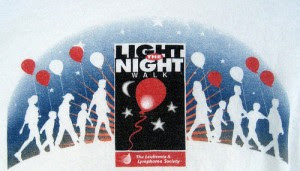A Note from your classroom about
……. LICE!
A child in our Nursery has been exposed to lice. The classroom has been cleaned and
disinfected, but you should check your child for lice, in case there was any
direct head to head contact.
Itchy, scratchy, creepy,
crawly. It’s unsettling to have these creatures take up
residence in your
family, but it’s important to remember a few facts about lice:
Lice can’t jump or fly from head to
head; You can’t catch lice from your pet; Lice don’t spread
disease; Lice like clean hair just as
much as dirty hair; 6 – 12 million people get head lice every
year.
Lice are tiny insects that live in human hair. They are about the
size of a sesame seed and have
light and dark areas on their bodies that help them blend into
hair. Their eggs, called nits, are even
smaller and attach themselves to hair strands with very strong
glue. About 12 days after the nits
hatch, they can lay up to 10 eggs a day till they die at about 28
days.
Lice are most frequently spread from direct head to head contact and
sometimes through shared combs or hats. Most often, “outbreaks” of lice occur
after close head to head contact such as during sleepovers. Lice generally
won’t live more than 24 hours off a human head and usually
cannot lay eggs if they are off the head.
INSPECT FOR LICE: To check for lice, use a magnifying glass in bright light or
sunlight. Inspect
the hair in layers especially above the ears and the back of the
neck where lice like to live. Look for
lice on the scalp and the “sesame seed” nits attached to hair.
Sometimes hairspray, dandruff or dirt
look like lice or nits, but they can be flicked out of the hair
easily. Nits are firmly attached and feel
like tiny grains of sand stuck to the hair. Nits that are more
than ¼ inch from the scalp are generally
empty eggs or dead.
TREATING LICE: Pesticides to get rid of lice have serious side effects. Some
have not been tested
for safety on children. People with cuts or sores on their scalp
should not use pesticides. Pregnant
or nursing mothers, children under two and people with chronic
health conditions should NOT use
pesticides to remove lice. Sometimes pesticides don’t work as lice
are immune to them.
An immobilizing gel or inexpensive hair conditioner which keeps
the lice from moving about on the
head combined with daily combing using a metal, fine toothed comb
is the safest and most
effective way to remove lice. Combing and nitpicking daily for
three weeks will prevent nits from
hatching and re-infesting the head with lice. Good effects have
been shown from drying the hair
with a hair dryer at a comfortable temperature for 30 minutes
which kills up to 88% of lice and nits.
Researchers feel the dry air is what kills the lice more than the
heat. DO NOT use hairdryers with
head lice shampoos as the shampoos are flammable.
LICE PREVENTION: To prevent lice infestations, Avoid head-to-head (hair-to-hair)
contact. Do not
share clothing such as hats, scarves, coats, sports uniforms, hair
ribbons, or barrettes. Girls may
want to put their hair back in ponytails or braids. Using
pesticides cannot prevent future lice
outbreaks. Parents should periodically check their children’s
scalp for lice and nits and especially
with excessive head scratching.
For more information:
http://www.cdc.gov/lice/head/schools.html
http://www.hsph.harvard.edu/headlice/flow.html
http://aappolicy.aappublications.org/cgi/content/full/pediatrics;110/3/638#SEC9
http://www.snohd.org/snoLiceArentNice/index.htm#











